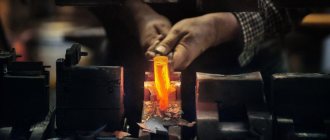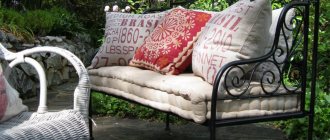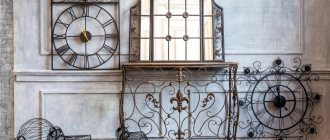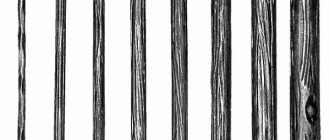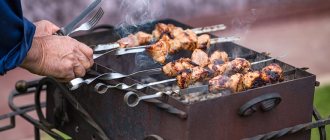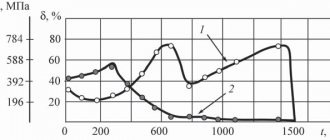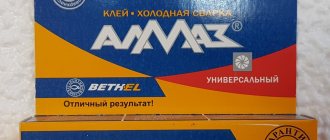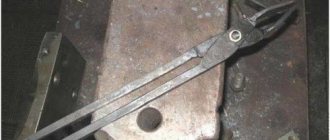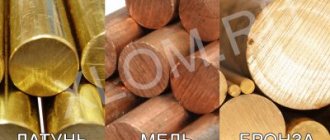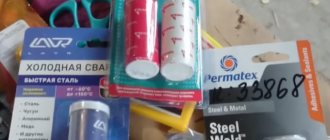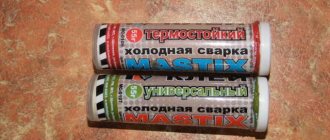- Do-it-yourself cold forging as a separate art form
- History of the forge: description of cold forging
- Basic tools for cold forging at home
- Equipment for rolling at home
- Gnutik: what products can be created with its help
- Snail: a simple tool for creating curls
- Wave: how to create and use this tool
- Flashlight and twister: features of these machines
- Do-it-yourself cold forging under pressure: creating blanks for forming products
- Styles and elements of patterns: photos of artistic forging
- Fastening the pattern elements: final metal processing
- Video: DIY cold forging machine
Do-it-yourself cold forging as a separate art form
Cold forging is a method of forming metal products under pressure. This method consists in the fact that the metal is not heated before deformation, but is bent using special machines. Forged patterns will decorate garden fences, stair railings, windows or entrance doors. Simplicity and low cost will allow anyone to quickly master the process and independently bring their ideas to life.
Using the cold forging method you can create incredibly beautiful products.
What is artistic forging
Artistic forging is a special technology for manufacturing household and decorative metal products. It is used to decorate entrance doors, gates, furniture, lamps and other home furnishings. A distinctive feature of artistic forging: the presence of decorative elements. These include silhouettes of animals, birds, plants and complex patterns. Despite the high cost, unique metal products have remained popular for several centuries. Forging masters can make a real work of art.
Hot and cold forging are used for artistic metal processing. Metal processing technology is no different from conventional forging, but requires more delicate work.
These are the masterpieces you get when a real master does forging
History of the forge: description of cold forging
Forging is a process of processing metal to give it the desired shape, turning a blank (blank) into a product. For people who are unfamiliar with the peculiarities of metal work, the word “forged” is associated with a forge, where a blank is heated from 800 to 1000 ° C and processed with a hammer to give shape. But in everyday life, items made by cold forging are more often used. Pots, teapots, patterns on gates and doors, metal stands are made by deforming metal under pressure without preheating.
Beautiful forged elements can be created even at home without the presence of special expensive equipment.
Cold forging is an easier, safer and more ergonomic processing method than hot forging. Main advantages:
- equipment for cold metal forging is cheap and ergonomic;
- low labor intensity;
- quick job training, low qualification requirements;
- the ability to create a unique ornament from basic elements.
The downside is the limited working surfaces and materials: rods, sheets and plates.
Cold forging is one of the ancient methods of metal processing.
Hand-made cold forging is historically older than hot forging. The first products were discovered in Egypt and Mesopotamia and date back to the 4th-3rd millennium BC. Initially, ore was used, which was deformable after being hit by a stone. Cold forging was used to make gold jewelry. Soft metal was easy to process with stone hammers. The oldest product was found in Egypt, it was made 8 thousand years ago.
Several centuries later, by observing volcanoes, people learned that high temperatures made it much easier to shape metals. They began to build blast furnaces and the profession of a blacksmith appeared. The Stone Age gave way to the Iron Age, and not only jewelry, but also dishes, weapons, and garden tools entered people’s lives. The principle of operation of the forge is still preserved, but the equipment for cold forging has been modernized.
Using modern equipment it is possible to create products with a large number of forged elements.
Photo galleries
Gates and wickets
A family monogram on the gate will turn an ordinary house into a family nest
Gates made according to the client's sketch. Simple but tasteful
Beautiful gates can be made for a garage
Beauty is in every detail - that’s why artistic forging is so popular. Simple elements create a beautiful composition
Firebird on the gate - Russian fairy tales in the modern world
Fences and railings
Beauty is in simplicity. Behind such a fence can hide both a village hut and a three-story cottage
The stone pedestal and the fence, as if “grown” into it, create a single composition
Iron roses are in no way inferior in beauty to the tulips growing nearby. A professional blacksmith can breathe life into soulless metal!
It seems like an unremarkable fence. But even she is beautiful in some way
Interweaving of leaves and flower buds. The master did a great job
Thin branches, as if alive, entwine the fence. The composition seems fragile, but will last for centuries
Stairs and railings
Amazing beauty! Correctly selected colors create the impression of a play of light and shadow
Few people will notice a flower with four petals here, but everyone will appreciate the beauty of the pattern.
The staircase and chandelier were created by the same blacksmith and therefore fit perfectly together
Patterns, lines, flowers. Simple, elegant and beautiful
A very unusual pattern. Fancy forged railing elements
A wrought iron staircase complements the interior. And it seems that she and the chair are one whole. Here the work of the designer is no less important than the quality of forging
Basic tools for cold forging at home
The creation of a unique product always begins with material calculations and the development of a detailed work plan. The easiest way to think through the moves is to create scale sketches of forged products, write down the dimensions and select the necessary tools. The choice of material deserves special attention. The metal should be strong, but bend easily.
Note! Hardened sheets or rods cannot be used. Under the influence of temperature changes, the structure of the metal changes, it becomes brittle and can break under pressure.
There are two types of do-it-yourself metal forging - rolling (working with rods) and stamping (extruding sheets under a press). At home, the first option is more often used. To press sheets, you need to make a special blank for deformation. Common rolling tools: bender, snail, twister, wave and flashlight.
Cold forged elements can be used to decorate stairs.
A bender is a basic tool used for bending rods at different angles. The spiral elements of cold forging are twisted using a snail. For shaping, it is best to choose rods with a diameter of 10-12 mm. Choosing a material that is too thick can significantly complicate the work of the master.
A twister machine is used to twist rods along the longitudinal axis. The wave, accordingly, is intended to create wave-like elements. The flashlight tool is used to work with several rods at once. They are installed on the equipment and bent by rotating the lever.
Cold forging
Cold forging involves deformation of an unheated workpiece. To give it the desired geometry, bends, snails, waves and lanterns are used. Each device has its own characteristics and allows you to obtain different patterns.
Advantages of cold forging:
- Less labor costs. To obtain the required parts, you do not need a forge, as well as other equipment associated with hot processing of the material. This has a positive effect on the speed of work and the cost of finished products.
- Low load on the master. Cold forging places less demands on the skills of a specialist and eliminates complex procedures associated with temperature exposure.
- Production of a wide range of products. Buyers can order artistic forged gates, forged entrance doors, and cold forged railings.
Disadvantages of cold forging:
- Template. The use of standard bending devices does not always allow obtaining products with a distinct individuality. Fences with cold forging elements, as well as other structures, have many similar features.
- Problems with adjustments. Most mistakes made when bending metal cannot be corrected. In case of a mistake, the master uses a new part and repeats the operations from the beginning.
At the same time, cold forging remains more popular among buyers due to its lower cost.
By contacting, you can buy cold forging elements and complete products. You can order grilles for cold forged windows, stairs, fences or decorative items for individual existing metal structures. Customers can also order benches, fences, gazebos, canopies and gates. The offered products are produced on specialized equipment and checked by technical control staff. The company guarantees high quality products, prompt delivery and professional installation.
Our consultants will help you determine the price of cold forged gates and other designs.
They will tell you about the cost of production and recommend solutions that meet the client’s requirements. Have questions? Request a call back!
Equipment for rolling at home
You can buy devices for cold forging yourself or make them yourself from available materials. Initially, you need to create 2-3 basic workbenches to process one rod. The design and complexity of manufacturing depend on the type of work performed. A thorough study of the process will allow you to make the equipment yourself.
To create complex forged products you will need more than one workbench.
Equipment for home blacksmith shop
Do-it-yourself artistic forging is impossible without the presence of special equipment. To do this, a novice master must first acquire a bender.
Gnutik
It helps to bend products at the desired angle or arc of the desired radius.
Optional equipment:
- A flashlight is the most difficult tool. This device allows you to create not each part separately, but several at once from single rods. The tool helps to make baskets of different sections and diameters from iron rods.
- Snail – helps create spirals from prepared elements. Spiral-shaped monograms are often found on forged products. Therefore, a novice craftsman can make his own snails of various diameters.
- Twister - helps to weave rods around the longitudinal axis. The operating principle of this device is very similar to a flashlight. This tool allows you to create three-dimensional parts and braiding to decorate the finished product.
It is also important to have a variety of vices, hammers, and sledgehammers in the blacksmith’s arsenal. It would be useful to purchase a grinder, a welding machine, a cutting and sharpening machine.
Gnutik: what products can be created with its help
It is not necessary to create bending drawings for cold forging yourself. It is enough to look at the principle of operation once to make the tool yourself. The machine is a steel tooling, which is divided into three parts. The middle element (lead) is movable; a central roller (wedge) is attached to it, which bends the rod. On the side plates, the rollers are made replaceable and inserted into the groove. By choosing different diameters, you can vary the bending angle of the rod or plate. A lever is attached to the top of the leash, which sets the structure in motion.
On a note! Bending a rod requires a lot of force, so attaching the workbench to a movable support will lead to incorrect bending and make work difficult.
The rollers should rotate freely in the holes, which will reduce the force required to bend the plate. Grooves for the rollers can be drilled in several places symmetrically to each other. This will allow you to quickly move the parts, varying the desired bending angle.
The bender helps bend metal rods at any angle.
Mechanism for bending metal with a bend:
- a plate or rod is installed between the rollers;
- using a vice, the central roller is pressed against the metal;
- By rotating the lever, the plate moves along the roller, acquiring the desired bend.
For convenience, a dial (a tape with divisions showing the height of the angle) is placed under the central roller. It is used to produce parts with high precision that must fit together perfectly.
The bent rolling tool is quite easy to use.
Snail: a simple tool for creating curls
The second name is a do-it-yourself conductor for cold forging. For manufacturing, you need to familiarize yourself with the bending process, for example, watch a forging video. Then the design itself will not raise questions and will be easy to repeat. The workbench is a frame on which the main matrix or spiral module stands. A rod is driven into the snail and moved around with a metal roller, pressing against the arc. The frame must be made of metal, since wood quickly collapses after prolonged stress. A metal corner, thick-walled pipe or channel are suitable for this purpose.
The machine is designed for two tabletops. One serves as a support and takes on most of the pressure, and the second holds the shape of the snail. Two circles with a thickness of at least 5 mm are cut out. The first part is installed on the frame. The center of the circle is marked on top, and a three- or four-leaf leg is welded to distribute the load.
The upper part of the volute, on which the metal is bent, is called a module. It can be static or typesetting.
The snail tool allows you to create curls from forged metal.
A static module is a device for cold forging, designed for bending pattern parts of the same type. The bend radius or angle cannot be changed. Before starting to form the module, markings are drawn on the tabletop. A snail is assembled from metal plates (at least 0.6 mm thick) and welded.
The typesetting module consists of several parts. Its use is the most common for do-it-yourself artistic forging, as it allows you to create elements of different radii. Initially, parts are marked on the tabletop and the grooves are calculated. Removable parts of the snail are cut out of thick metal. Holes for fixing to the tabletop need to be cut only in the middle. Otherwise, the stress is distributed unevenly and the groove breaks faster.
The module for forging with your own hands can be made replaceable. A structure of the required radius is welded onto a metal circle. It is attached to the tabletop with grooves or bolts. To produce elements of different diameters, several modules are made that can be used on one machine.
The typesetting module will allow you to create curls of various radii from forged metal.
A rotating shaft and lever need to be secured between the tabletops. It is necessary that the distance between the roller and the module be at least 2 cm, and the shaft stroke must extend beyond the tabletop. A movable element is installed on the lever handle to adjust the radius of the roller stroke.
Wave: how to create and use this tool
Wave is a tool for forging lines like a sine wave. Two rollers are machined to the specified dimensions. The first roller is static (the rod will bend around it), it is fixed on a support. The second is the leading one, it is mounted on a lever and rotates when it comes into contact with the surface. Pressure is generated between the shafts, which acts on the metal and causes it to bend.
The static roller can be machined into the shape of a stepped pyramid. Thus, the radius of the wave can be changed by moving the lever and rod higher by a division. When using such a machine, one side must always be held in order to avoid damaging the bend. To more accurately repeat the wave shape, two static rollers are machined, one of which holds the rod in the desired position, preventing further deformation, and the second is used for bending.
The “Wave” tool will help you make the rod wavy.
Flashlight and twister: features of these machines
A flashlight is a cold forging equipment for working with several rods and creating three-dimensional baskets. To avoid constructing a frame, you can use a regular vice to secure the tool. The tool consists of three parts: two dies and a roller. The matrix can be made of strong, preferably hardened metal 4-5 cm wide.
In each matrix, a central hole is machined into which the roller is mounted. Grooves are made on the sides for installing rods. The second matrix must move freely along the lever, since during deformation the distance between the working surfaces decreases. When the lever is rotated, the rods bend in a spiral, forming a structure similar to a flashlight. Do-it-yourself metal products, which consist of several rods, are secured by welding.
The twister machine has a similar design. However, instead of a shaft, a rod is inserted into the matrix, which is pressed with a plate or bolts. Between them you need to install a movable element that moves forward when the shaft rotates. The rod twists along the longitudinal axis, forming a symmetrical spiral.
You can create forged elements using the flashlight and twister tools.
Note! The running matrix should approach static with each rotation. If it is fixed in one position, the master will have to make more efforts to bend the rods.
Application options
The most popular metal product: forged gates and fences. Massive or patterned, made of pure metal or alloy - they look equally sophisticated and elegant. But forged products are not just interior decoration. Metal shutters, stair railings, decorative gates and balconies are able to withstand high loads, sudden temperature changes and exposure to the elements.
Non-functional forms of interior elements include rotundas, fences for flower beds, figurines of plants and animals. They will decorate any garden and emphasize its individuality.
The ability to give a product any shape allows you to create designs of any complexity - thanks to this, artistic forging remains the most popular way of decorating a home.
A gate made in the shape of a dragon will attract the attention of guests and arouse the envy of neighbors
Do-it-yourself cold forging under pressure: creating blanks for forming products
On wrought-iron fences you can often notice not only geometric patterns, but also flowers, butterflies, leaves and other decorative elements. They are also made using cold forging techniques, but by rolling rather than stamping.
Do-it-yourself volumetric forged products are made from sheet metal. Working with a press at home is less common than rolling. Extrusion of sheets under a press can be either manual (knocking and pressing) or automatic. At home, it is cheaper to use hand stamping. To do this, the master needs to make several blanks that will be printed on a metal sheet under pressure.
A drawing of the future forged product will greatly facilitate the work of the craftsman.
Metal forging equipment:
- Punch (press stamp or cotter pin) is the upper part of the press, it pushes the sheet inward. The pressing side of the stamp can be drawing or smooth.
- Matrix is an element that is made in the shape of the required object. The applied relief deforms the plate under pressure, giving it the required shape.
- Press lever - a handle or relay for bringing the dies closer together and adjusting the force of the press.
Before starting work, you need to create a drawing of the future product. Sketches of artistic forging are transferred to the workpiece, it is cut and ground along the edges. You can use a regular vice as a workbench for pressing. It is most convenient to place them in a vertical position so that the plate lies horizontally to the plane. This way, the plate will be positioned exactly between the dies and will not slip out when the lever is rotated.
Different types of workbenches allow you to create unique forged elements.
Simple forging of metal at home can be done with a chisel and hammer. In this case, the chisel acts as a punch, the anvil as a matrix, and the hammer as a lever. To better print the design, you can put a plate with notches under the sheet. This way the relief will be clearer and more beautiful.
Note! The metal used for stamping must be softer than the punch and die. Otherwise, the tools will quickly break.
To make the “sheet” element, a blank of the desired shape is cut out of a metal plate 20-30 mm thick. A longitudinal line is drawn on it with a pencil in the center. The chisel striker is placed at an angle to this straight line. After hitting the handle, a line is imprinted on the plate, similar to the veins of leaves.
The cold forging method can be used to create three-dimensional elements.
You can use pliers to form the required volume of a cold forged product. The part is clamped between a vice and bent into the desired shape. This type of work is well suited for completing a small number of items for personal use. The process of beating a pattern by hand takes a lot of time, it is quite monotonous and requires great precision.
It is more profitable to purchase stamps for permanent work (in the form of leaves, petals, flowers, etc.), since accurately turning two identical elements is a very complex process. The main parts are machined from a blank or cast by hot forging. This type of work requires a lot of experience and high precision. The punch and die must match. With strong pressure, irregularities will be imprinted on the product. If the discrepancy is very large, then the press will crush the workpieces - and you will have to start work from scratch.
Styles and elements of patterns: photos of artistic forging
Creating a beautiful pattern begins with a forging sketch. The master must have a clear idea of the picture he wants to make. Initially, a drawing is drawn, materials and the number of necessary elements are calculated, machines and equipment are selected. In order for the product to look beautiful, it is better to immediately choose the style in which it will be made. Looking through photos of cold forged products, you can easily notice which direction the pattern belongs to.
Beautiful forged products can be made in various styles.
There are several styles of forming a forged pattern.
The Romanesque style is characterized by severity and symmetry. On the fences you can see a dense arrangement of spirals in the same order, the details are often repeated and of the same type. This is a monumental pattern using the volute element (C-shaped twisted one-sided curls).
Gothic ornament . Few people know that modern fencing and fences are most often made in this style. A characteristic feature is upward striving. The rods are pointed and end with tops in the form of arrows, spears or sharp spikes. The spiral elements used in this style are called perforations, and they look like a stem branched in different directions. For variety, lanterns or voluminous spirals are added between the straight rods.
Products in the Baroque style are the most common.
Renaissance is very rare. In this style, pointed charcoal elements are practically not used. The basis is round arcs, spirals and waves. The branching metal rods are decorated with leaves or flowers; graceful curves take the shape of a figure eight. Characteristic elements are notch, spiral, volute and figure eight. The style is very harmonious, the details are installed symmetrically in the form of intertwined lines.
Baroque is the complete opposite of Renaissance. The style is openwork and very lush. C-shaped spirals, volutes, curls, curved lines and intricate patterns are used. Three-dimensional leaves and flowers are added to the weaving, creating a dynamic shape.
Rococo . This direction is characterized by the use of thin rods and double-sided curls. The rocaille ornament creates constant movement and is distinguished by filigree and three-dimensional patterns. In the photo of cold forging, asymmetry and fractional patterns are noticeable. The use of straight rods and flat gratings is unacceptable.
The classic style allows you to combine various forged elements.
Classicism . A beautiful, albeit simple style that brought symmetry back into fashion. To create an ornament, curls, perforations, spirals and straight rods are used. Another element is introduced into use - a meander (broken lines or rods bent at right angles). Vertical architectonics are always strictly maintained in fences.
Empire style is characterized by the presence of geometric patterns and long smooth rods. The main element (volute) is modified: an elongated straight line with one-sided curls at the ends. The main thing for this style is strict simplicity, symmetrical geometry combined with spiral elements.
Art Nouveau , or Art Nouveau , added biological motifs to artistic forging with one's own hands. The style does not use straight lines, only various bends, meanders, curls and spirals. Symmetry fades into the background. The ornament repeats the silhouette of a person or animal, leaves and flowers are added. The pattern is constructed in such a way that the curls evenly flow into each other throughout the entire ornament.
It is difficult to create a beautiful forged pattern without a drawing.
If a person starts work without a preliminary drawing, he will quickly get confused in creating a cold forged product. Each pattern should be thought out as much as possible, and it is better to immediately transfer edits that are made during work to the sketch in order to clearly understand what the result should be.
On a note! Even if you have photos of forged patterns, you need to make drawings and markings to accurately place all the parts.
Fastening the pattern elements: final metal processing
After all the necessary elements of the ornament have been created, its formation begins. The appearance of the pattern may differ slightly from the sketch. To identify possible errors, you need to conduct a preview. Initially, the pattern can be laid out on a flat surface without fastening its parts together. In this way, you can evaluate how successful you were in bringing your idea to life, as well as correct shortcomings in your work. You should not start forming a pattern without first viewing the result.
Products look more complete if the elements are connected by welding.
There are two main types of connections:
- Weld;
- rivets (or artistic clamps).
It is useful to use a welding machine in places where the joint seam can be easily cleaned or will be invisible. To preserve the aesthetics of the ornament of a cold forged product, you can put figured rivets. They will reliably hold the components together and complement the decor.
The ornament is connected gradually, depending on the number of parts. Initially, small elements are held together, notches, twisted lines and monograms are formed. Welding is used. The seam is smoothed with a grinder using a 0.6 cm thick sanding wheel. It easily goes around bends and irregularities. Large parts are connected with curly clamps. The rivets are placed symmetrically to each other to complement the pattern. At the end of the work, the ornament is passed around with a cleaning or polishing wheel.
Cold forging allows you to create beautiful and original products with your own hands.
Artistic forging is not only a business or a job, but can also be an entertaining hobby. Even a novice craftsman can make cold forging equipment with his own hands from scrap materials. Cold forging specialists can easily be called artists, as they create beautiful ornaments from rough rods, pipes and sheets. Such hobbies require full dedication and considerable expenses. However, all the invested funds and efforts will bear fruit if they are supported by the desire to create beauty.
Cold forging: limited elements and variety of products
The cold forging method, according to historians, first appeared in Mesopotamia and Egypt about 6 years ago. It does not require much knowledge or special tools. Essentially, cold forging is the bending of rods. Therefore, it is mainly used to create trellises, fences, fences, gates, gates, stairs and railings.
The most difficult thing in cold forging is connecting the rods using a welding machine. And the work itself on changing the shape of iron rods can be carried out both on homemade devices (bent, snail, wave and globe), and on professional machines. One of the most popular machines for cold forging is Azhur-Mini from the Azhurstal plant.
The advantage of cold forging is that you can make the tools yourself. Unless you have to buy a relay
Using the cold forging method, you can:
- bend;
- flatten;
- twist.
Its advantages include:
- lack of special skills for work;
- the ability to carry out operations on inexpensive or self-made devices;
- high level of productivity;
- the possibility of various combinations of basic elements and creating a huge number of unique products from them.
Disadvantages of the method:
- small selection of operations;
- a limited set of initial elements (rolled profiles, metal strip, solid and square rods).
